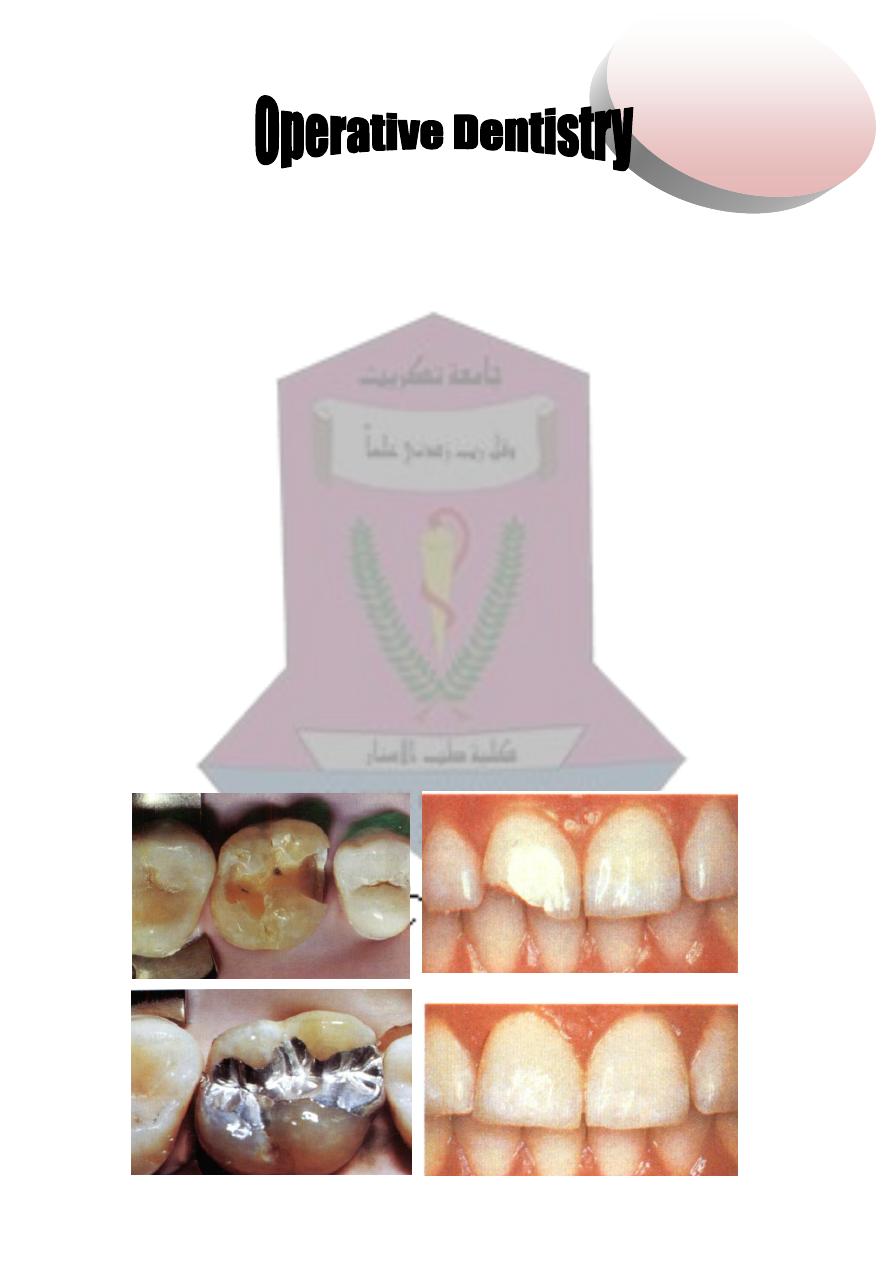
1
أ.م. مثنى شعبان رجب
جامعة تكريت
–
كلية
طب االسنان
Operative Dentistry:
Is the art and science of the diagnosis, treatment, and prognosis of
defects of teeth which do not require full coverage restorations for
correction; such treatment should result in the restoration of proper tooth
form, function and esthetic while maintaining the physiological integrity
of teeth in harmonious relationship with the adjacent hard and soft
tissues; all of which enhance the general health of the patient.
Indications:
The indications for operative procedures are numerous. However,
they can be categorized into three primary treatment needs:
(1) Caries.
(2) Malformed, discolored, or fractured teeth.
(3) Restoration replacement or repair.
Cavity preparation:
Is the mechanical alteration of a defective, injured or diseased tooth
in order to best receive a restorative material to reestablish a healthy state
of the tooth including esthetic corrections when indicated, along with
normal form and function.
Lec. 1
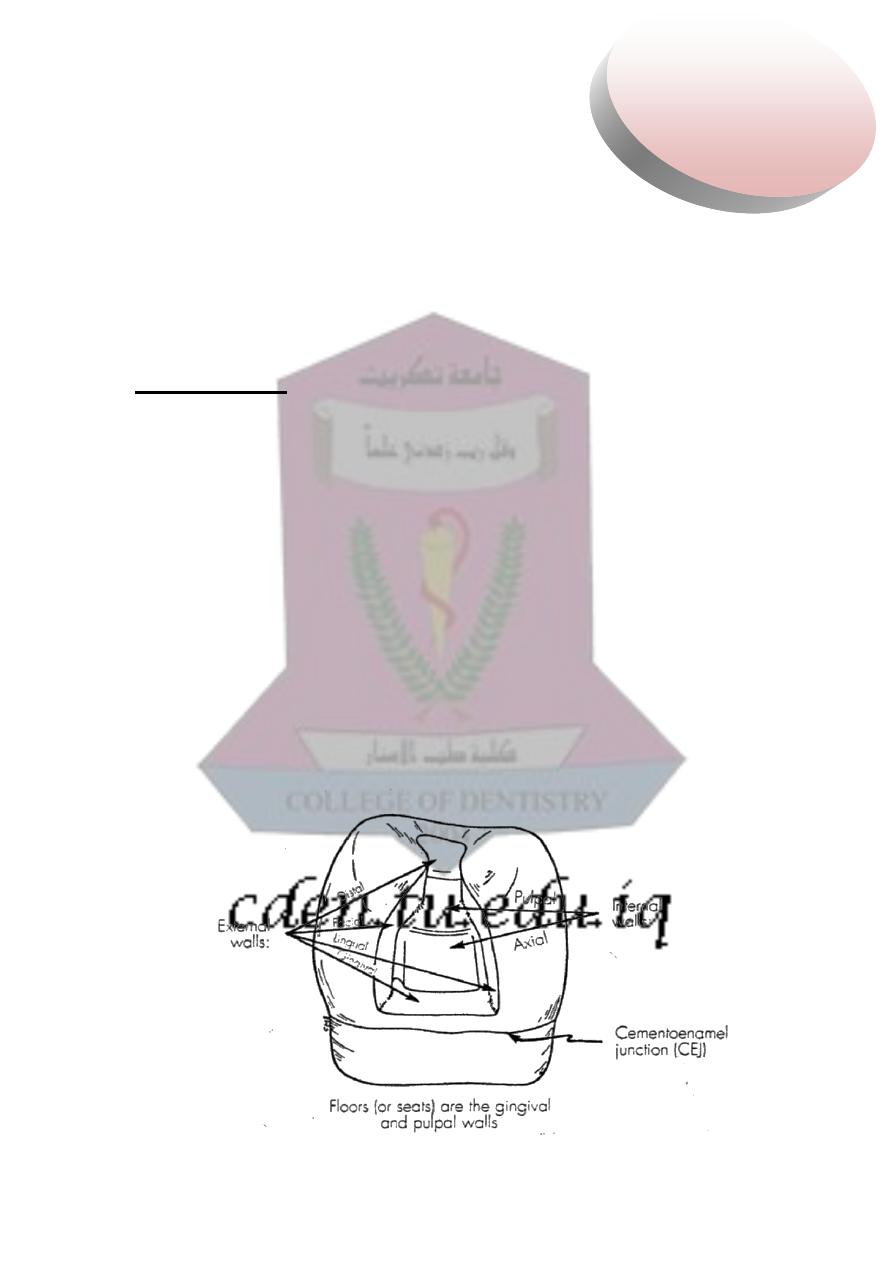
2
أ.م. مثنى شعبان رجب
جامعة تكريت
–
كلية
طب االسنان
Objectives of cavity preparation:
1- Remove all defects and give the necessary protection of the pulp.
2- Locate the margins of the restoration as conservatively as possible.
3- Form the cavity so that under force of mastication the tooth or the
restoration or both will not fracture and the restoration will not be
displaced.
4- Allow for the esthetic and functional placement of a restorative
material.
Definitions
Cavity preparation walls:
Internal walls
: An internal wall is a prepared cavity surface that
does not extend to the external tooth surface.
Axial wall:
Is an internal wall parallel with the long axis of the
tooth.
Pulpal wall:
Is an internal wall that is both perpendicular to the
long axis of the tooth and occlusal to the pulp.
External wall:
An external wall is a prepared cavity surface that
extends to the external tooth surface, and such a wall takes the name of
the tooth surface (or aspect) that the wall is toward.
Floor or Seat
: Is a prepared cavity wall which is reasonably flat
and perpendicular to those occlusion forces that are directed
occlusogingivally. Ex: gingival and pulpal walls.
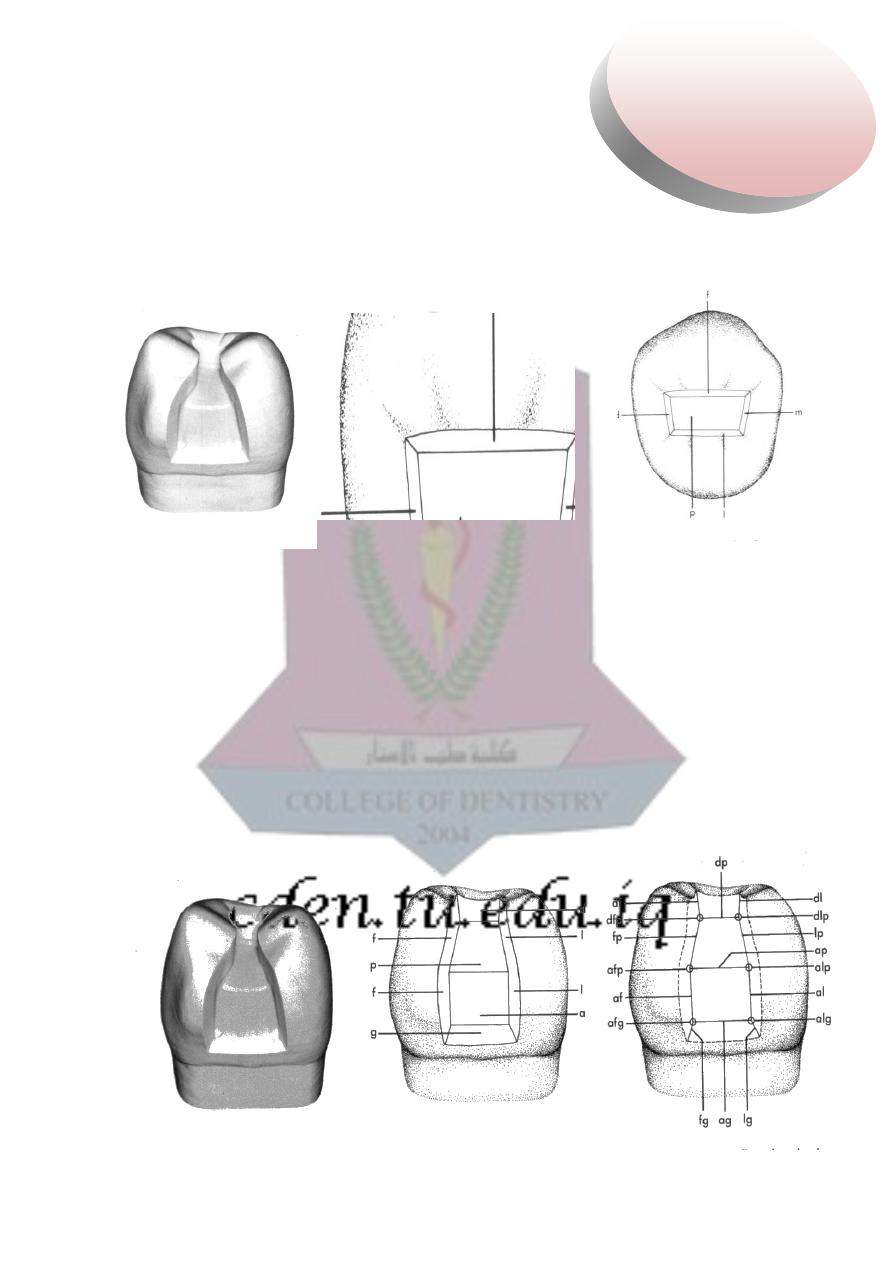
3
أ.م. مثنى شعبان رجب
جامعة تكريت
–
كلية
طب االسنان
Enamel wall:
The enamel wall is that portion of the prepared
external wall consisting of enamel.
Dentinal wall:
The dentinal wall is that portion of a prepared
external wall consisting of dentin which may contain retention features.
Line angle:
A line angle is the junction of two planal surfaces of different
orientation along a line . It takes the name of the two surfaces forming the
angle. An internal angle is a line angle whose apex points into the tooth.
An external angle is a line angle whose apex points away from the tooth.
Point angle:
A point angle is a junction of three planal surfaces of different
orientation at a common point. It takes the name of the three surfaces
forming it.
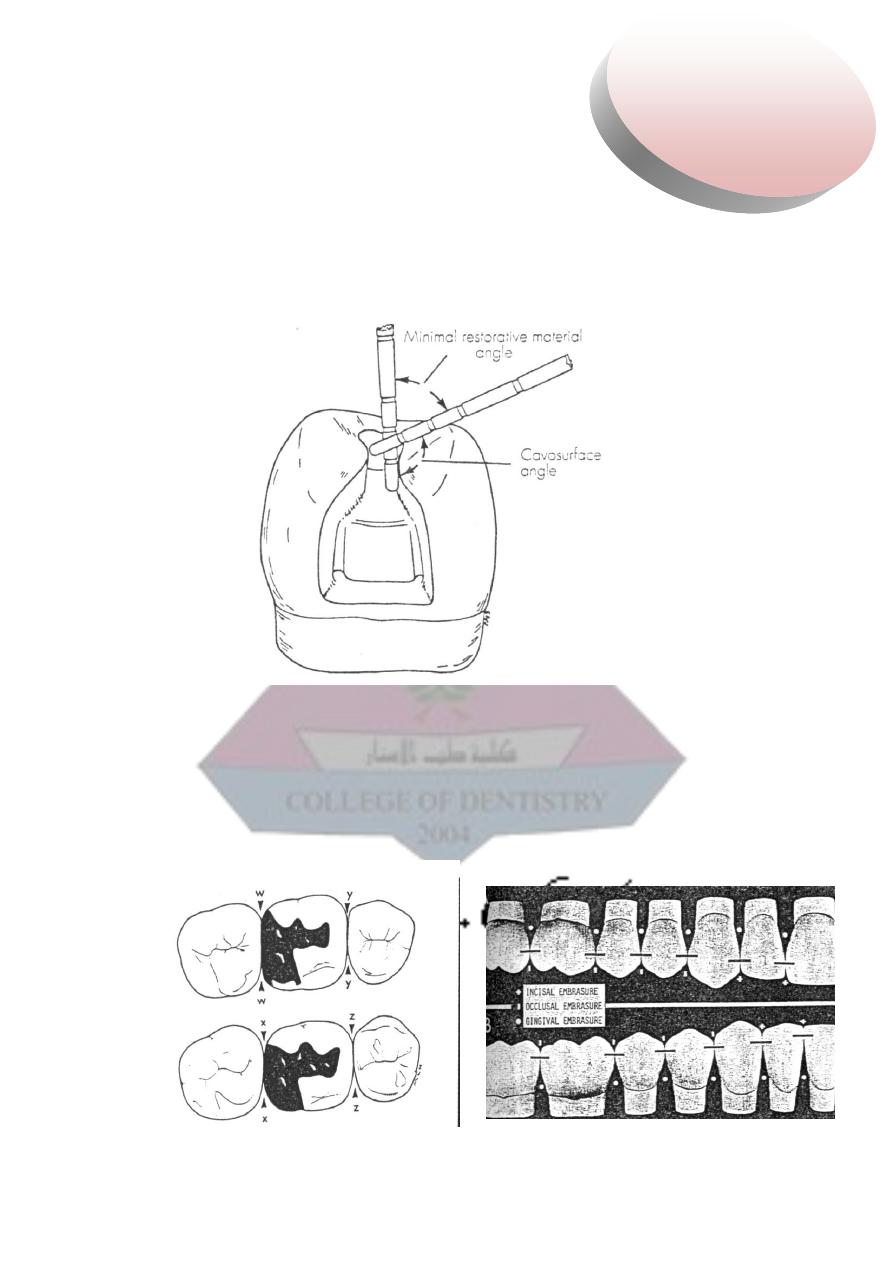
4
أ.م. مثنى شعبان رجب
جامعة تكريت
–
كلية
طب االسنان
Cavosurface angle, cavosurface margin, and cavity
margin:
The cavosurface angle is the angle of tooth structure formed by the
junction of a prepared cavity wall and the external surface of the tooth.
The actual junction is referred to as cavity margin
or
cavosurface
margin.
Embrasures:
Are V - shaped spaces that originate at the proximal contact areas
between adjacent teeth and are named for the direction toward which they
radiate. These embrasures are: (1) facial, (2) lingual, (3) incisal or
occlusal, and (4) gingival.
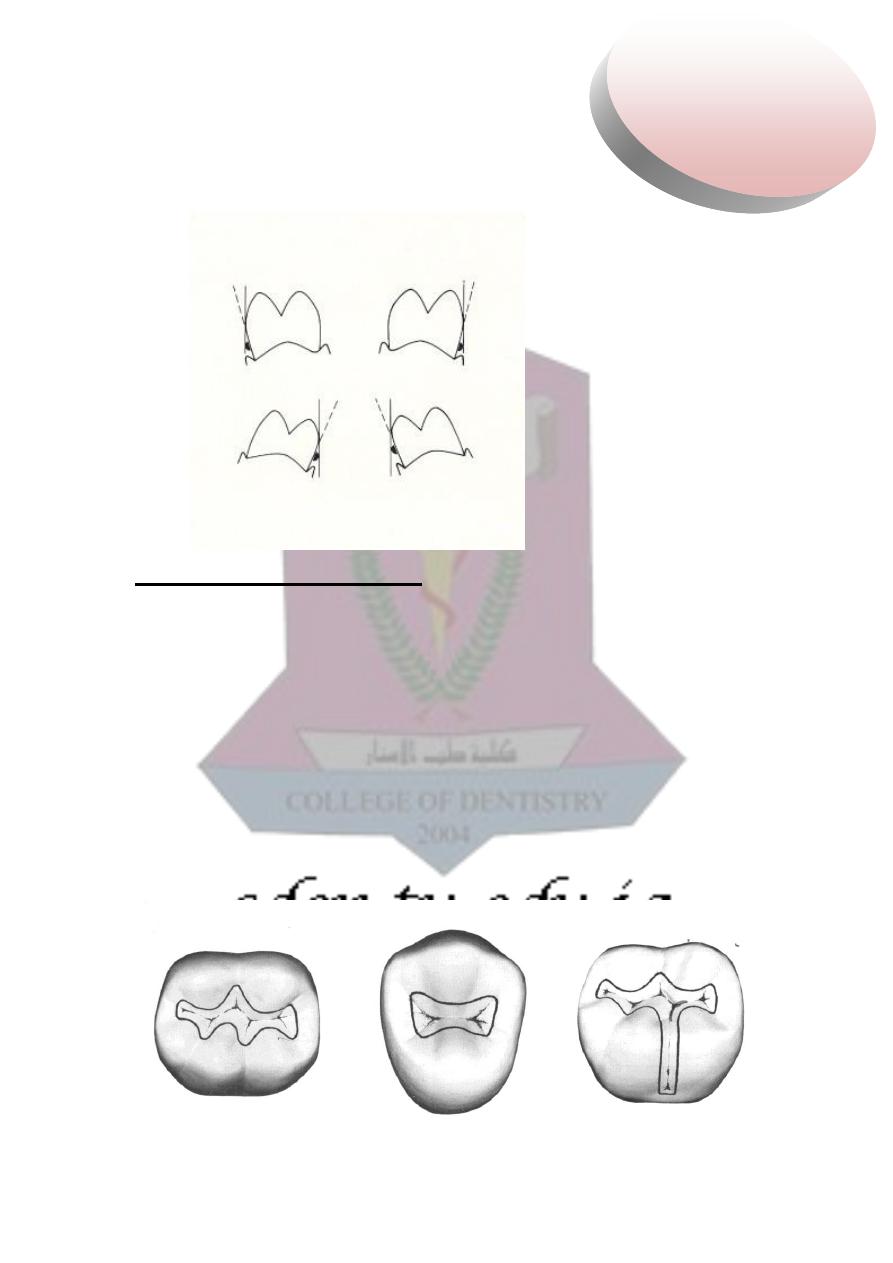
5
أ.م. مثنى شعبان رجب
جامعة تكريت
–
كلية
طب االسنان
Undercut:
Is a portion of prepared cavity confined by the walls which
converge towards the outer surface or it could be a localized channel or
groove within prepared cavity.
Cavity classifications
1- According to the number of surfaces involved
A- Simple cavity: only one surface involved
B- Compound cavity: two surfaces involved
C- Complex cavity: Three surfaces (or more) involved
2- According to anatomical areas involved and associated type of
treatment was presented by G.V Black
Class I : All pit and fissure cavities : cavities on the occlusal
surface of premolars and molars, on the occlusal two thirds of the facial
and lingual surfaces of molars , on the lingual surface of maxillary
incisors.

6
أ.م. مثنى شعبان رجب
جامعة تكريت
–
كلية
طب االسنان
Class II : Cavities on the proximal surfaces of posterior teeth .
(Mesio-oclusal MO),(Disto-oclusal DO) , (Mesio- occluso – distal
MOD).
Class III : Cavities on the proximal surfaces of anterior teeth that
do not involve the incisal angle.
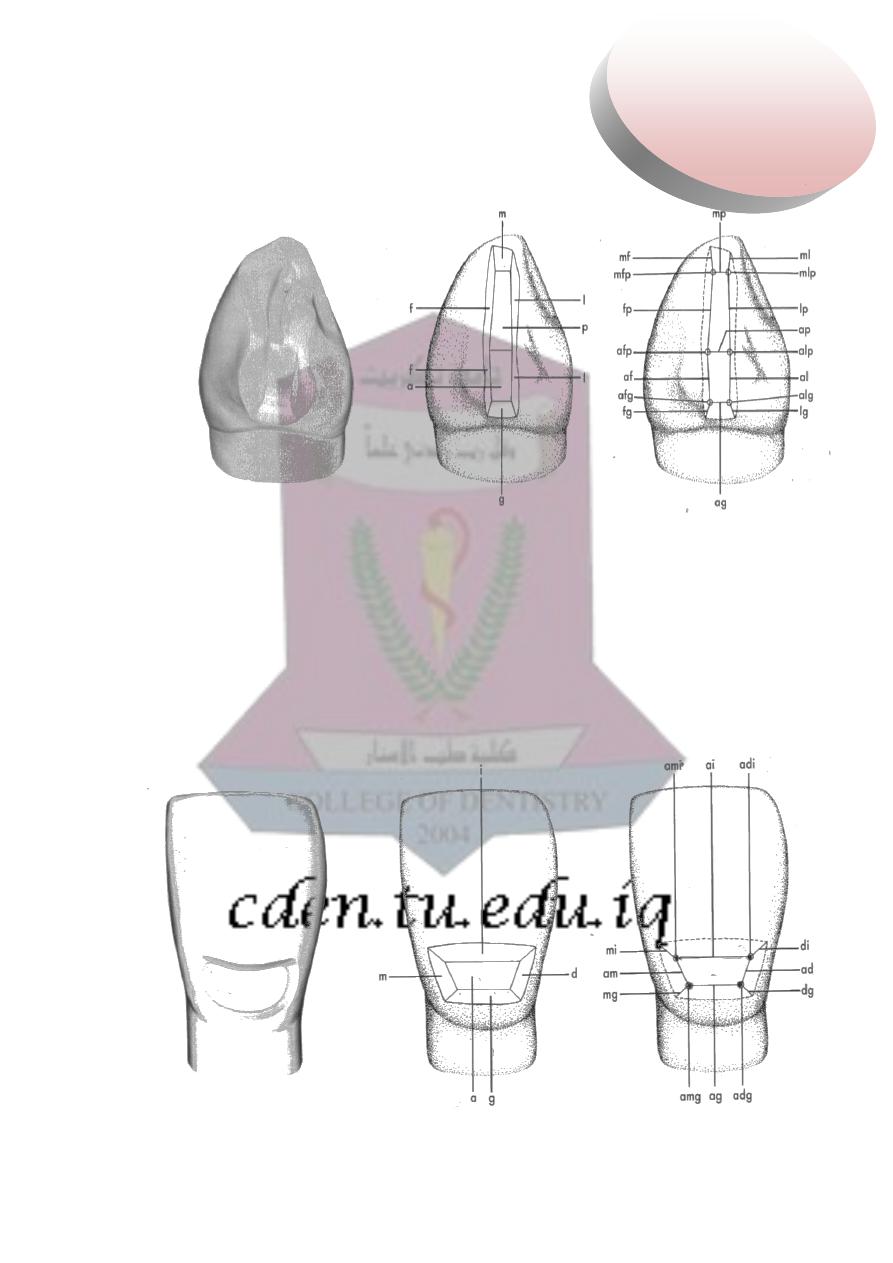
7
أ.م. مثنى شعبان رجب
جامعة تكريت
–
كلية
طب االسنان
Class IV : Cavities on the proximal surfaces of anterior teeth that
do involve the incisal edge.
Class V : Cavities on the gingival third of the facial and lingual
surfaces of all teeth (not pit and fissure cavities)
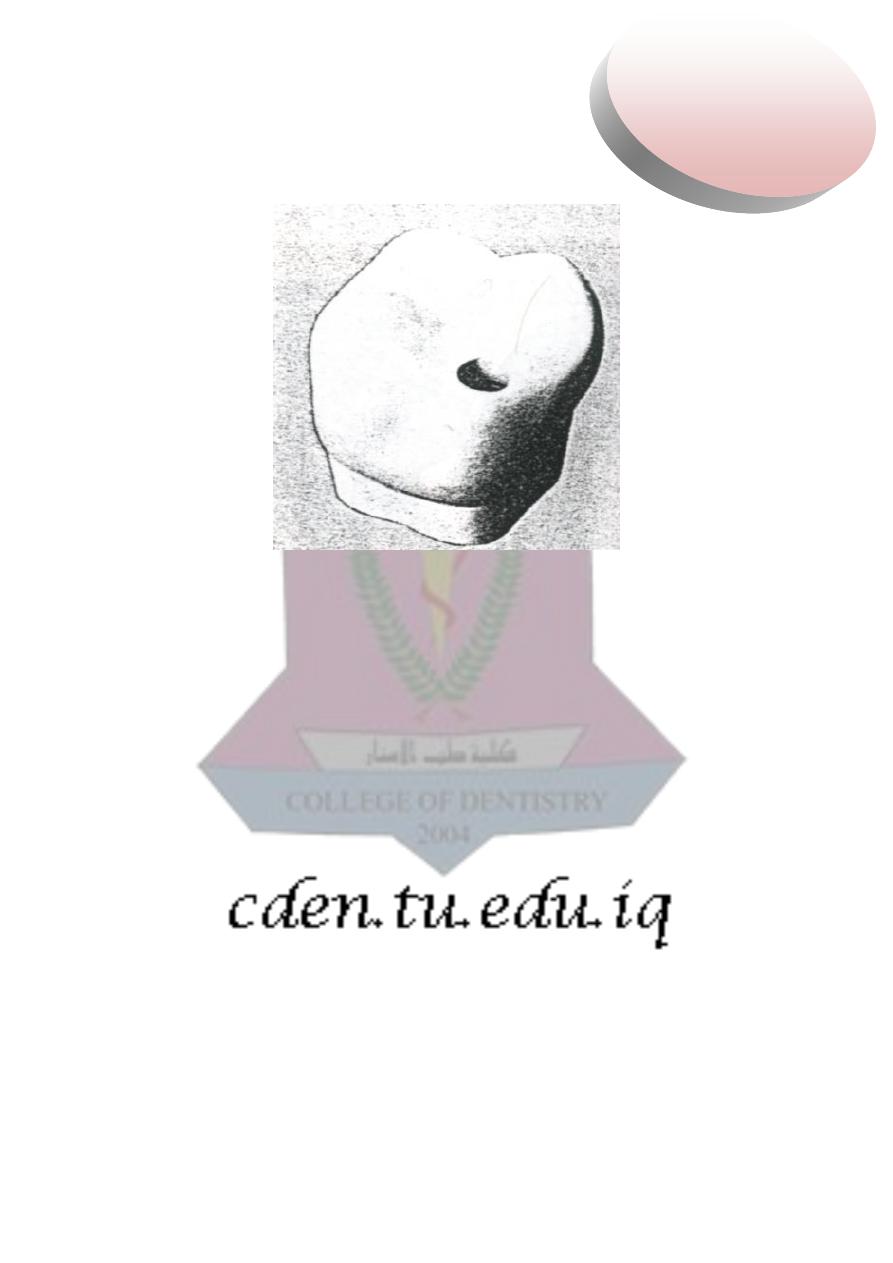
8
أ.م. مثنى شعبان رجب
جامعة تكريت
–
كلية
طب االسنان
Class VI : Cavities on the incisal edge of anterior teeth or the
occlusal cusp heights of posterior teeth.
